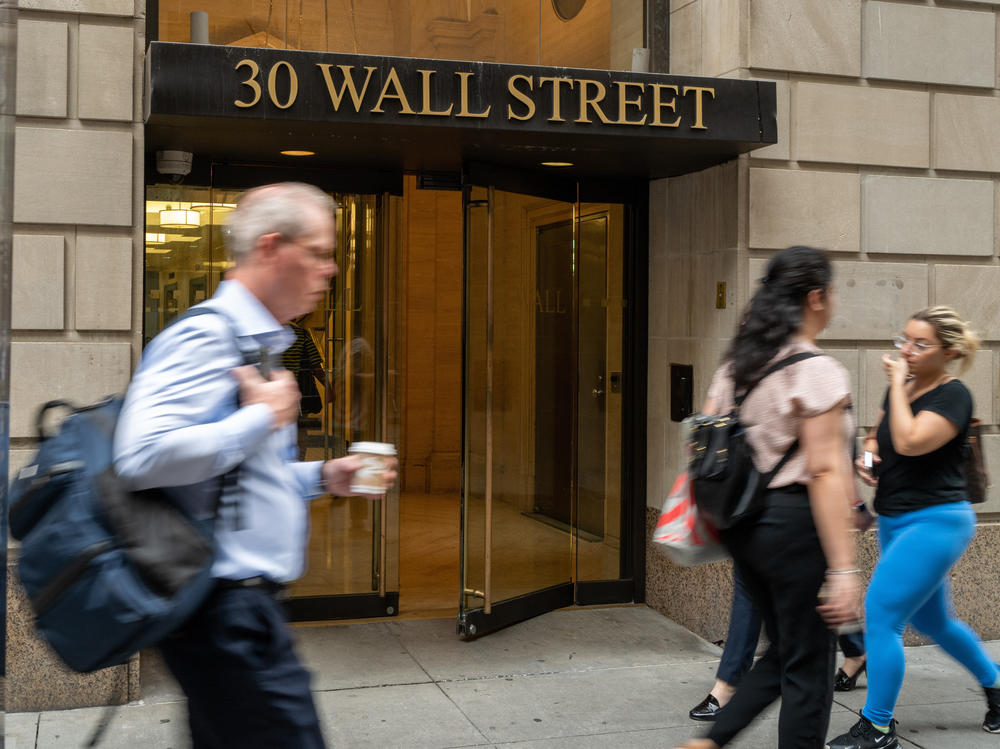Section Branding
Header Content
A spate of horrific attacks in New York has people fearful of returning to work
Primary Content
New York City desperately needs it workers to return to the office. Its economy depends on it.
But it's facing a particularly tricky problem: After several horrific attacks in the city's subway system this year, workers are telling their employers they are afraid to come back to work.
In two meetings this year, some of the city's most powerful CEOs confronted Mayor Eric Adams, demanding answers, according to Kathryn Wylde, the president and CEO of the Partnership for New York City, who arranged the meetings.
"The executives came out very strong, saying, 'We can't in conscience bring our people back to work, encourage them to ride the subways, unless we see tangible evidence that you are doing something about this,'" she recalls.
What the numbers show
The CEOs mobilized after a series of high-profile attacks on commuters.
In a killing that shocked the city, Michelle Go, a 40-year-old consultant for Deloitte, was pushed in front of an oncoming train in the Times Square subway station.
In April, a gunman fired 33 rounds at commuters during rush hour. In May, Daniel Enriquez, a Goldman Sachs executive, was shot dead by a fellow passenger.
The killings put the city on edge, and that wasn't lost on Adams, who addressed reporters right after Go's killing.
"To lose a New Yorker in this fashion would only continue to elevate the fears of individuals not using our subway system," Adams said at the time.
So far this year, the number of complaints in the transit system, including assaults and harassment, is almost the same as it was at this point in 2019, according to data from the Metropolitan Transportation Authority.
But subway ridership is still nowhere near where it was before the pandemic. It's roughly 60% of what it was in 2019.
The subway attacks are contributing to a perception crime is on the rise in the city.
Police statistics show that there have been fewer murders at this point than last year, when the country was emerging from the lockdowns that characterized much of 2020. Still, the number of murders is sharply higher than at the same time in 2019, before the pandemic.
Meanwhile, the number of felony assaults is up year to date compared to both 2021 and 2019.
And although New York City's crime numbers are still historically low, almost half of registered voters who responded to a recent Quinnipiac poll said crime is "the most urgent issue facing New York City today."
Wall Street executives are also worried
The killings of Go and Enriquez have also shaken Wall Street, because they both worked for big financial institutions.
Financial firms have also been prominent in pushing workers to return to their offices.
Goldman Sachs CEO David Solomon is sensitive to the fears about crime.
"We have to have a safe environment for people," he told NPR in a recent interview. "I think public safety is just paramount for the vitality of cities, and the vitality of cities is paramount for economic activity in our country."
Solomon, who grew up in the suburbs outside of New York City, said crime was higher when he was a kid in the 1970s and 1980s. He remembered there were strict rules about where he could go, and how late he could stay out.
Solomon also said that, when he raised his children in the city decades later, it was "extraordinarily" safe.
"The city is certainly less safe," he said, talking about the present. "I would say it's a little grittier and a little dirtier," he said.
New York City is not alone in dealing with public safety issues.
Billionaire Ken Griffin recently decided to move Citadel's headquarters from Chicago to Miami, citing the city's longstanding problems with crime.
In a statement to NPR, the hedge fund said it was having a hard time "recruiting top talent from across the world to Chicago given the rising and senseless violence in the city."
The worries about the city's future
Of course, everyone's sense of safety is different.
What worries Wylde, of the Partnership for New York City, is how this will affect young people, with polls showing they feel more apprehensive about riding the subway and crime more generally.
When Wall Street executives talk about return-to-office plans, they often emphasize how important it is for young people to get back to the office so they don't miss out on mentoring and other career opportunities.
Wylde, who lived in New York since the late 1960s, remembers when crime rates were much higher than they are today, but she notes that many of today's residents came at a time when the city was safer.
"A whole generation of New Yorkers never gave a thought to their personal safety and security because we were the safest big city in America, perhaps the world," says Wylde.
And executives like Wylde worry that New York City could lose some of its appeal to companies and workers if the worries about safety continue to take hold.
Copyright 2022 NPR. To see more, visit https://www.npr.org.



